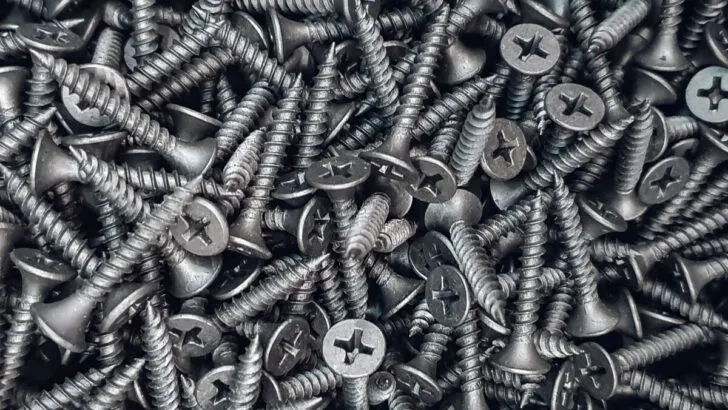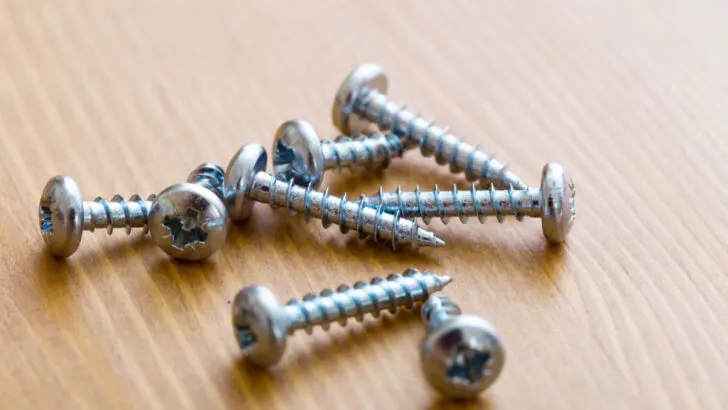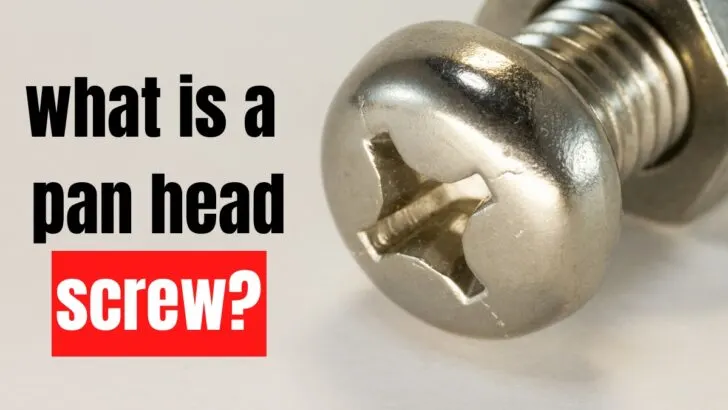There are many different types of screws and there may be problems if you don’t use the right kind. What are pan head screws?
Pan head screws have large heads that do not sink into the material the way flat head screws do. This works in mechanics because it would be risky to have a screw that sinks too much into the material. Pan head screws are unsuitable for situations where the screw can’t protrude.
Read on to learn more about when and how to use pan head screws.
What Advantages Do Pan Head Screws Have?
There is no best type of screw. Different types of screws are useful in different situations, including pan head screws. They have a few main advantages.
Protrudes From the Material
A pan head screw has a large head that protrudes from the material rather than sinking into it. In some situations, this won’t work because you can’t have a protruding head. You need the screw to be flush with the material, so you use a flat head screw.
However, a protruding head that won’t sink is best in other situations. Sometimes, a headless screw or a screw that will sink could damage the mechanical parts. Metal machinery often uses non-countersunk pan head screws.
Large, Flat Underside
The bottom of the head of the screw is very flat. This makes it sit evenly against the material.
A screw head presses on a material to hold it in place. Because the screw head is large and flat, it distributes the force over a wide area. This spreading of force minimizes the risk of damaging the material when you tighten the screw.
A lot of the time, the large or flat bottom of the screw head is useful in metalwork. However, it can also be useful on wood, where a smaller screw head may create cracks.
Appearance
Sometimes, the screw is entirely inside the object, so the appearance of the screw doesn’t matter. Other times, the screw is visible from the outside, so it matters that some screws look better than others.
A pan head screw has a polished finish and looks better than most other screws.
Do Pan Head Screws Have Any Disadvantages?
Many pan head screws can be the wrong choice for many situations. However, they don’t have a lot of disadvantages in the true sense.
One disadvantage is the screw’s protrusion. If a surface needs to be completely flat/level/flush, it can’t have a screw head protruding from it. Pan head screws always protrude.
Countersunk vs. Non-Countersunk Heads
Countersunk screws don’t protrude from the surface they are used on. This is because the screw pushes is way far enough into the material that the head is flush with the surface. They are useful in woodworking applications.
Flat Head vs. Pan Head Screws
Flat head screws are tapered underneath the flat head. The screw gradually narrows as you move from the head to the straight part of the shaft. This makes you able to sink the screw.
Pan head screws are not tapered. The bottom and not just the top of the screw’s head are flat. Therefore, you cannot sink the screw, either intentionally or accidentally.
Pan Head vs. Button Head Screws
Button head screws have sloped rather than straight sides. Therefore, they do not protrude as much as pan head screws do, so you can make them tighter.
Different Types of Screw Heads
Pan head screws are only one of more than ten commonly used types of screw heads. It will cause problems if you use the wrong screw for the job.
Flat Head Screws

Flat head screws are useful in any situation where the screw can’t protrude. People making everything from bookshelves to door hinges use flat head screws.
Oval/Raised Head Screws
These are very similar to flat head screws, but with a domed top. The domed top only makes the screw look better and doesn’t have any other purpose.
Round Head Screws

Round head screws are less popular than before because pan head screws have largely replaced them.
Round head screws have a smaller diameter than pan head screws. Sometimes, they are preferred because of their appearance.
Truss Head Screws
Truss head screws are wide and have a slightly rounded top. They can hold two thin materials together strongly. They protrude only a little.
Flange Head Screws
Flange head screws have washers on them. The washers distribute pressure and make it so that the screw doesn’t move around.
Bugle Head Screws
Bugle head screws are designed to minimize damage to materials, making them popular drywall screws. The top of the screw head is flat, and beneath it, there is a concave curve down to the shaft. These screws also spread stress over a wide area.
Button Head Screws
Button head screws have a hex drive (with a hexagon-shaped hole for a hex screwdriver or Allen key), and a wide domed head. They are resistant to slipping, so you won’t easily strip the screw.
Fillister Head Screws
Fillister head screws have smaller heads than round head screws, but have deeper slots. The deep slot increases torque, making it easy to tighten the screw.
Socket Head Screws
Socket head screws have long, cylindrical heads. This makes them very durable and good for applications requiring high strength. Socket head screws are used in automobiles and in construction.
Key Takeaways to Pan Head Screws
Pan head screws are non-countersunk screws, which means they do not sink into the material. The wide head of the screw protrudes out.
A protruding head doesn’t always work. Sometimes, the screw needs to be flush with the material, so you need a countersunk screw.
A screw’s appearance matters. If people are going to see the screw, builders and mechanics often choose screws by appearance.


